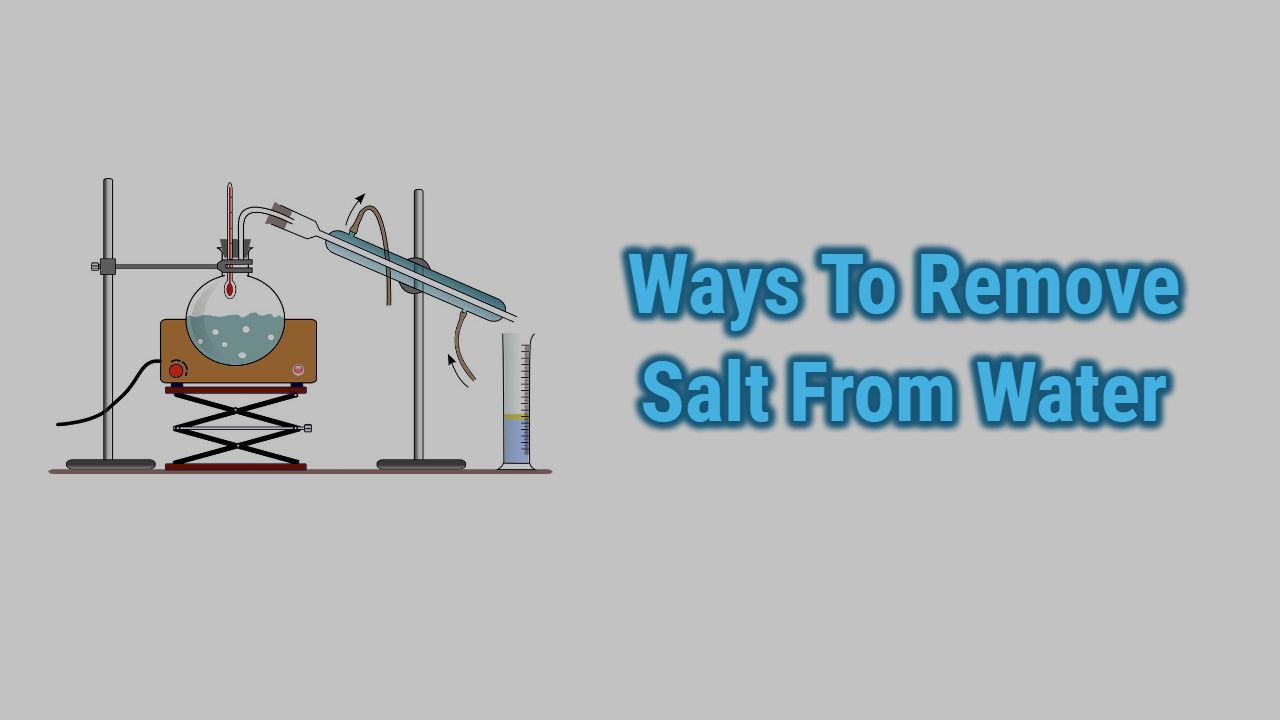According to a World Health Organisation (WHO) report, consuming high amounts of salt in various forms can have very bad consequences for your health. WHO has linked high Blood Pressure, Hypertension and other problems to salt.
Salt, which is also called sodium, is very harmful if consumed in high amounts. Similarly, high amounts of salt content in water are also not good and can be dangerous for your health.
Since salt occurs naturally, we cannot avoid it, and it gets into the water from seas, oceans, and surface water. There are no available recommended levels of salt intake for humans.
But there is a standard quantity that says 20mg/L (milligram per liter). However, the Environment Protection Agency (EPA) recommends that an individual should take at least 3400 milligrams of sodium on a daily basis in our food.
In this article, we will show you easy ways of removing salt from water. What techniques are required and simple steps to remove the salt from water? Let us see and learn more about salt removal techniques.
Table of Contents
Ways to remove salt from water

- Distillation Method– Old technique but time and money consuming. You need to boil the water, and the evaporation is transferred into another flask, then water is cooled to get the water; this is called the distillation method. The salt is left behind when water evaporates.
- Evaporation Method– works similar to the distillation method but takes a lot more time than distillation. It requires a lot of manual work as well. Traditional and time taking process. And it is cheap.
- Reverse Osmosis (RO)– most easy and widely used technique to remove salt from water. We all have a RO installed at home, so RO is very effective in removing salt from water. Apart from removing other harmful contaminants, RO also removes salt content from the water. In this, the salt gets trapped in the very small semi-permeable RO membrane. Then the water without salt is further moved ahead and then used for drinking.
- Water Conditioners– Just like water softeners, conditioners condition the water and make it fit for drinking. In this part, it removes salt by conditioning it. Expensive and less knowledge on how exactly it works.
- Electrolysis– positively charged cathodes are placed in the water, electricity is passed, and the charged ions attract the salt and leave the water clean and salt-free. Needs scenic knowledge and set-up. It is expensive.
- Decalonic Acid– It can be put into the saltwater, the water is heated, and upon cooling, the salt is evaporated from the water, giving you salt-free water. It can be done with the help of professionals.
- Desalination using reverse osmosis– desalination is done for seawater using a RO. High pressure is forced through the RO membrane, thus blocking the salt content.
- Potassium chloride– when water is being softened, instead of using sodium, potassium chloride can be used. It is mainly used in water softeners and water conditioners. Using potassium chloride in the water softener will not attract salt in the water.
What are the safe levels of salt consumption?

There are no such levels that are recommended. However, EPA says at least 3400 milligrams of salt per day can be consumed. Another standard salt consumption is 1 teaspoon or less than 2300mg.
In the USA, it is generally said that salt content between 20 mg/L to 270mg/L (milligram per liter) can be consumed, depending on various health factors.
From all the above techniques, which is the best and why?
All the above-mentioned techniques are good and reliable, but all have their own merits and demerits. However, we recommend using reverse osmosis (RO). We choose RO because while removing the salt content from water, it also removes most of the harmful contaminants.
RO is a proven method of water filter and has the capacity to deliver desired results. It is widely and popularly used in the American states. Moreover, it is economical and reliable for the long term.
Conclusion
As we know, many people take salt as a negative point, but it should be noted that some amount of salt consumption is necessary for body functioning. High amounts of salts, no doubt, can have detrimental health effects, but if consumed in less amount, it is safe.
High levels of sodium content in water, which we drink, is also very harmful. It is not recommended to drink high levels of salt content in water for a long time. It is advised to get your water tested and checked for salt content regularly.
We have briefly mentioned all the possible salt removal techniques and methods; we have also described how it is removed for each method. And in the end, we felt that the RO is most appropriate to remove salt from water; it is economical, easy and reliable for long-term uses.
